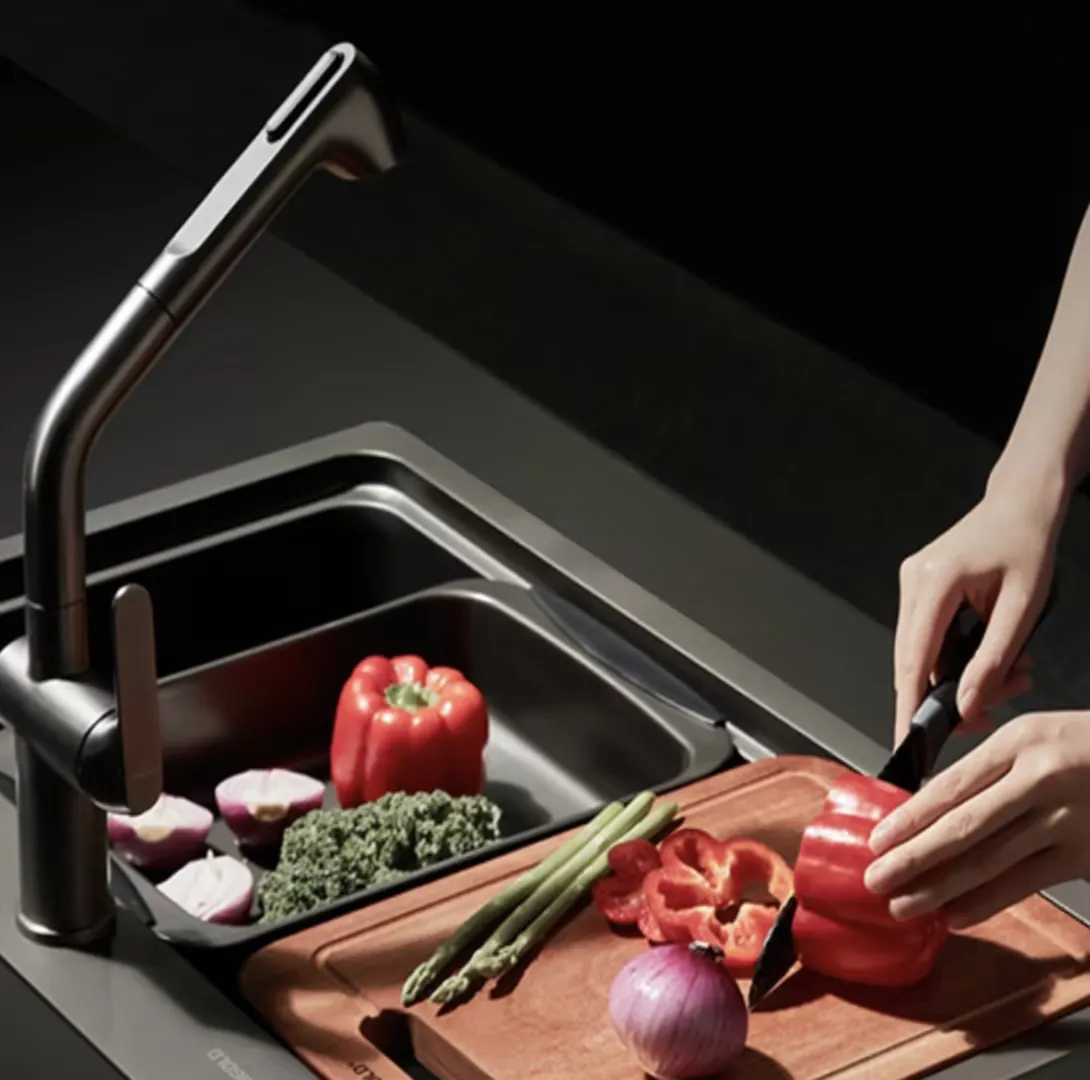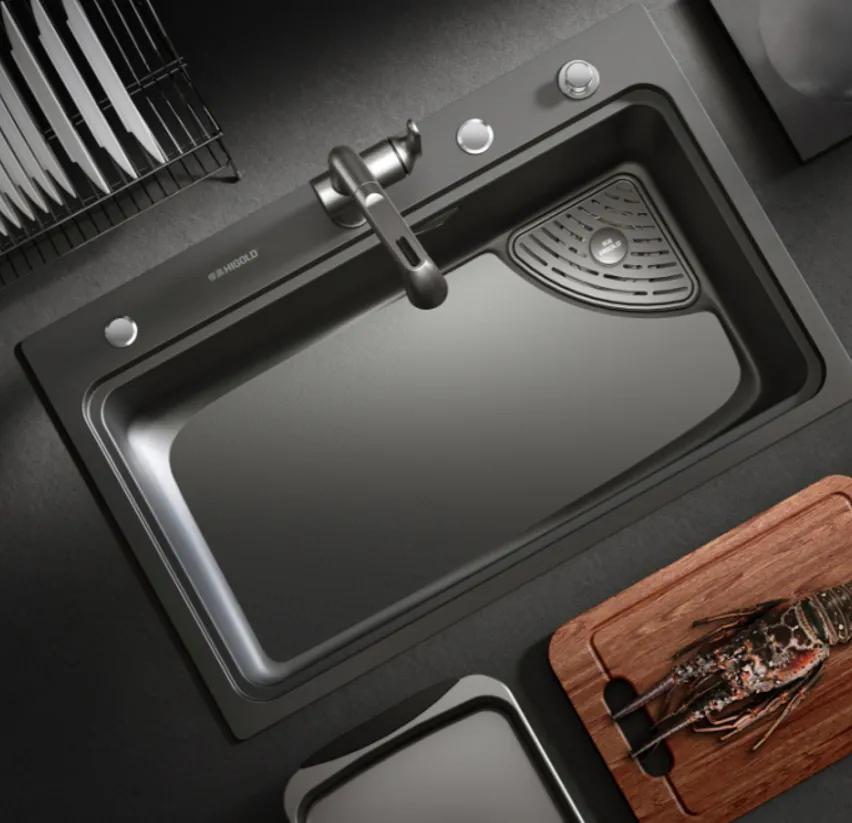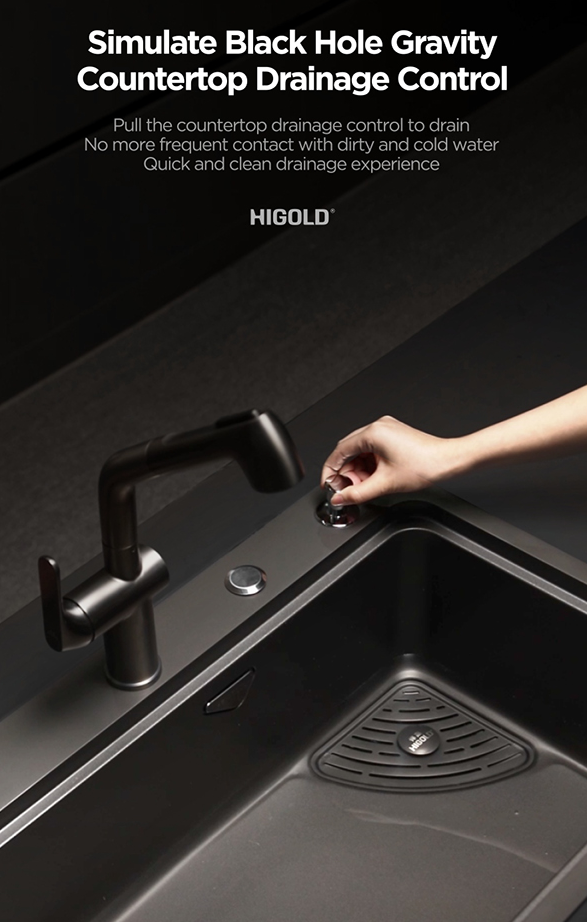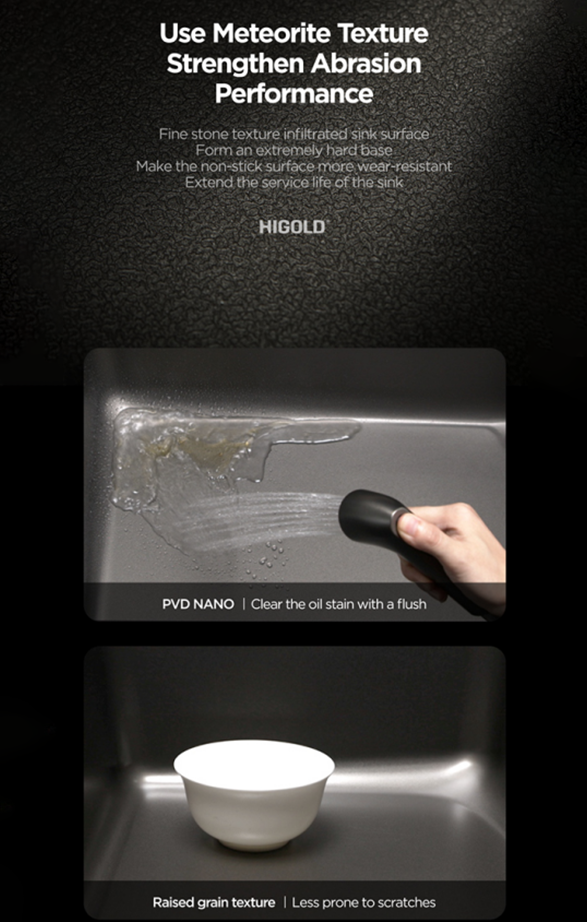Kitchen sinks not only have to withstand a lot of cleaning work, but also have to deal with long-term wear and tear and various stains. With the diversification of kitchen design styles, more and more families are beginning to choose modern black kitchen sinks.
Many black sink users have found that although they clean every day, the sink always seems to look dirty. This problem confuses many housewives and even professional cleaners.
So why does the black kitchen sink always look dirty? Is it because of the sink material itself, or is it improper use and cleaning methods?
This article will explore in depth from multiple aspects why black kitchen sinks look easy to get dirty, help everyone understand the difficulty of cleaning black sinks, and provide effective cleaning suggestions.

What are the materials of black kitchen sinks?
The materials of black kitchen sinks are usually made of composite quartz, ceramics, stainless steel, black coated stainless steel and other materials. Black sinks of different materials have their own characteristics, which determine their performance in appearance and cleaning. Understanding the characteristics of the sink material can help us better understand why it always looks dirty.
1. Composite Quartz Black Sink
Combined with quartz and resin, composite quartz sinks are smooth and durable. Composite quartz sinks are popular with families due to their resistance to high temperatures, corrosion and scratches. However, black composite quartz sinks are more likely to show water stains, oil stains and food residues in daily use. This is because water stains, fingerprints and stains on black surfaces are relatively obvious, especially in strong light conditions. Tiny stains on the surface can also cause the sink to look dirty.
2. Ceramic Black Sink
Ceramic sinks are usually smooth, scratch-resistant and have a high hardness. However, black ceramic sinks are also affected by water and oil stains. When the sink is exposed to water, oil stains and other food residues for a long time, the stains on the black surface are very conspicuous. In addition, the surface of ceramic is easily damaged by acidic or alkaline cleaners, and once the surface is scratched or otherwise worn, stains will be more likely to adhere.
3. Stainless Steel Black Sink
Stainless steel black sinks are generally achieved by applying a black coating or using a black spray paint process. Over time, coatings can become brittle and easily peel or scratch, making it easier for stains and water spots to enter and settle on the surface. These black sinks are more susceptible to external forces than other sink materials, so extra care needs to be taken to avoid scratches.

Why do black kitchen sinks look dirty?
The most fundamental reason why black kitchen sinks look dirty is the combination of their color and surface sheen. The dark and black surfaces create a sharp contrast with water stains, grease and food residues, and stains are very conspicuous against this background. Here are a few of the main factors that cause black sinks to look dirty:
1. Showing of water stains
Water stains are one of the most common stains on kitchen sinks, especially in environments where water is frequently used. Water stains are usually more obvious on the surface of black sinks, especially when the water droplets evaporate and leave white marks. Compared with white or light-colored sinks, black kitchen sinks are more likely to show these marks, resulting in sinks that always look dirty.
2. Grease and food residues
When cooking, grease and food residues often splash onto the sink. For black kitchen sinks, these oil stains and food residues are not only easy to adhere to the surface of the sink, but also difficult to remove because the surface is relatively smooth. The interweaving effect of oil stains and water stains makes black sinks appear dirtier than sinks of other colors.
3. Fingerprints and stains
Due to the smooth surface and dark color of black sinks, fingerprints and grease stains are particularly conspicuous. When washing dishes, washing vegetables or other kitchen operations, the grease and stains on the fingers can easily transfer to the surface of the sink, forming unpleasant marks. And these fingerprints and oil stains are more conspicuous on the black surface, giving people a feeling that the sink is always dirty.
4. The influence of light
The surface of the black kitchen sink easily reflects water stains, oil stains and dust under light. In the kitchen, especially when the windows are large or the kitchen lighting is strong, the light will make every small stain on the sink more prominent. Therefore, even if the sink has been cleaned, some tiny stains on the surface will be magnified, causing the sink to always look dirty.

What should I pay attention to when cleaning a black kitchen sink?
Although black kitchen sinks have a modern look, the challenges of cleaning them cannot be ignored. Here are some issues that require special attention when cleaning black sinks:
1. Over-cleaning can cause damage
In order to keep the sink clean, many families use strong detergents or cleaning tools with strong abrasiveness. However, over-cleaning or using improper tools can damage the surface of black sinks, causing scratches or peeling of the coating. Scratches on the surface of the sink make it easier for stains to adhere, forming a vicious cycle that makes the sink look even dirtier.
2. Using improper detergents
Some detergents may contain strong acid or alkaline ingredients. Long-term use of these detergents will damage the protective layer of the black sink and affect the surface gloss of the sink. For example, strong acidic or chlorine-containing detergents can cause micro-damage to the surface of composite quartz or ceramic sinks, eventually leading to stains. Therefore, choosing the right detergent is crucial to keeping the sink clean.
3. Frequent exposure to food residues and grease stains
The kitchen is a place where food and water are frequently exposed. Especially during cooking, food residues, oil smoke and soup can easily fall into the sink. If not cleaned in time, these stains will quickly accumulate and leave difficult-to-remove marks on the surface of the sink. Since the surface of the black sink is relatively smooth, it is convenient to clean, but if it is not cleaned in time, the stains will adhere for a long time, causing the sink to always appear dirty.

How to effectively clean a black kitchen sink?
In order to avoid the black kitchen sink always looking dirty, it is very important to know some cleaning tips. Here are a few effective cleaning suggestions:
1. Use mild detergents
Choosing mild neutral detergents can avoid damaging the surface of the sink. Avoid using strong acid or alkaline detergents, especially detergents containing chlorine or bleach. Using kitchen-specific detergents can effectively remove oil stains and stains without damaging the surface.
2. Regular wiping and drying
In order to prevent the accumulation of water and oil stains, it is very important to wipe the sink regularly with a soft cloth and keep it dry. Water droplets in the sink can be removed by simply wiping to avoid the formation of water stains.
3. Use a soft cloth or sponge
Avoid using steel wool or hard brushes, which may scratch the surface of the sink. It is recommended to use a soft cloth or sponge to gently wipe the sink to ensure that the surface is cleaned without damaging it.
4. Clean up oil stains and food residues in time
The best way to clean a black kitchen sink is to clean up oil stains and food residues in time. Avoid oil stains staying in the sink for a long time. When cleaning food residues, use a screen or garbage disposal to ensure that the sink remains clean.
5. Use a waterproofing spray
Some special waterproofing sprays can help reduce water stains on the surface of the sink and keep the sink shiny. Regular use of such products can effectively delay the accumulation of stains.
How does Higold ensure innovation in its kitchenware products?
Innovation is embedded in Higold’s DNA. The company runs an independent R&D department that continuously develops new materials and features for kitchen sinks and faucets. Higold has pioneered key industry technologies such as robotic bending, automatic R-angle processing, and smart edge grinding. This dedication to R&D ensures that each product not only meets modern design trends but also sets new benchmarks in functionality and durability. Get in touch to request a quote for the latest models.


